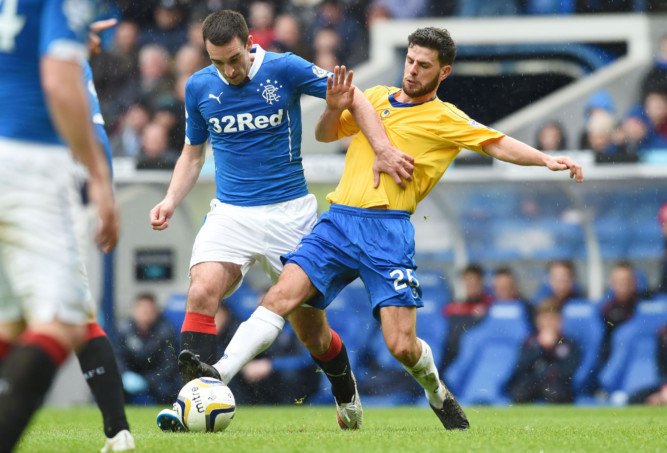
Spaniards pushed on after European Under-19s final but Scots were left behind.
Scotland followers with good memories could have been forgiven for heaving a sigh on watching last Sunday’s television action.
In the afternoon Juan Mata was the star for Manchester United, scoring twice to help the Red Devils down Liverpool in the English Premier League.
Then at night, Gerard Pique was in imperious form for Barcelona against Real Madrid in El Clasico shutting down Cristiano Ronaldo & Co to show up Sergio Ramos at the other end of the pitch.
What do the two men have in common?
Nine years ago they were team-mates in the Spanish side that won the European Championship Under-19s.
That in itself wasn’t altogether remarkable.
Spain were also champions at the level in 2002 and 2004. They would go on to win it again in 2007, 2011 and 2012.
What was out of the ordinary was the identity of the country they beat in the tournament’s showpiece Final Scotland.
Yet as the arguments continue to rage over the current Under-19 manager Ricky Sbragia’s non-selection of Real Madrid’s Jack Harper, a look back at where the players from the respective sides have ended up makes for depressing reading.
The young Spanish kids have grown up and gone to play for the likes of Barcelona, Real and Atheltico Madrid as well as other top European clubs such as Zenit St Petersburg, Sporting Lisbon and Real Sociedad.
The Scots, though, have had markedly less success.
Of the starting line-up in the Final only Graham Dorrans is playing in the English Premier League, with West Bromwich Albion, but he is currently out on loan with Norwich City in the English Championship.
Mark Reynolds, Simon Ferry and Scott Fox are all involved in the Scottish Premier League, with Aberdeen, Dundee and Partick Thistle respectively.
Lee Wallace is in the Scottish Championship with Rangers. While he was capped by the senior side in 2009, he picked up just eight caps before dropping out of favour.
From there, though, the drop off in what was viewed as a golden generation gets startling.
Garry Kenneth, ex of Dundee United and at one time reported to be a transfer target of Chelsea, has recently moved from playing in the Tayside Juniors to Australian lower-league outfit Adamstown Rosebud.
A higher-profile departure Down Under is Michael McGlinchey who is with New Zealand club Wellington Phoenix.
Kenneth’s fellow defender Andrew Cave-Brown is with Beccles Town in England’s Anglian Combination Division.
Closer to home Jamie Adams, one time of Kilmarnock, is playing in the South of Scotland League with Wigton and Bladnoch.
Most disappointingly of all, Charles Grant, ex of Celtic, was forced to retire, aged just 24, following successive injuries.
The tale of woe is marginally mitigated by the fact Steven Fletcher who was suspended for the Final and Robert Snodgrass, currently of English Premier League teams Sunderland and Hull, played earlier in the tournament.
Yet as Gordon Smith, the former SFA Chief Executive and ex-Scotland youth internationalist, explains in his column this week that only goes part of the way to explaining the failure of the young players to kick on in later years.
And having seen off France in Finland in qualifying for Poland and then beaten Turkey and the Czech Republic plus drawn with Portugal in the Finals itself, this was a group with huge potential.
Coaches Archie Gemmill and Tommy Wilson went on record to say so, the fans who had thrilled to footage of the games on the television believed it was only a matter of time.
“It was the same story as happened with myself in 1972 when we beat a French Under-18 team which contained Michel Platini, Jean Tigana and Dominque Rocheteau,” said Smith.
“None of us went on to play for the senior side. Those three were key men in helping France win the Euros six years later.
“There is too much focus on getting results at youth level and not enough on developing the players we will need for the senior team.
“The best players, those with the real drive and determination, will make it to the top anyway. That is the case in any country and with any system.
“As things stand, though, I fear too much young talent isn’t brought through as effectively as it should be.”

Enjoy the convenience of having The Sunday Post delivered as a digital ePaper straight to your smartphone, tablet or computer.
Subscribe for only £5.49 a month and enjoy all the benefits of the printed paper as a digital replica.
Subscribe